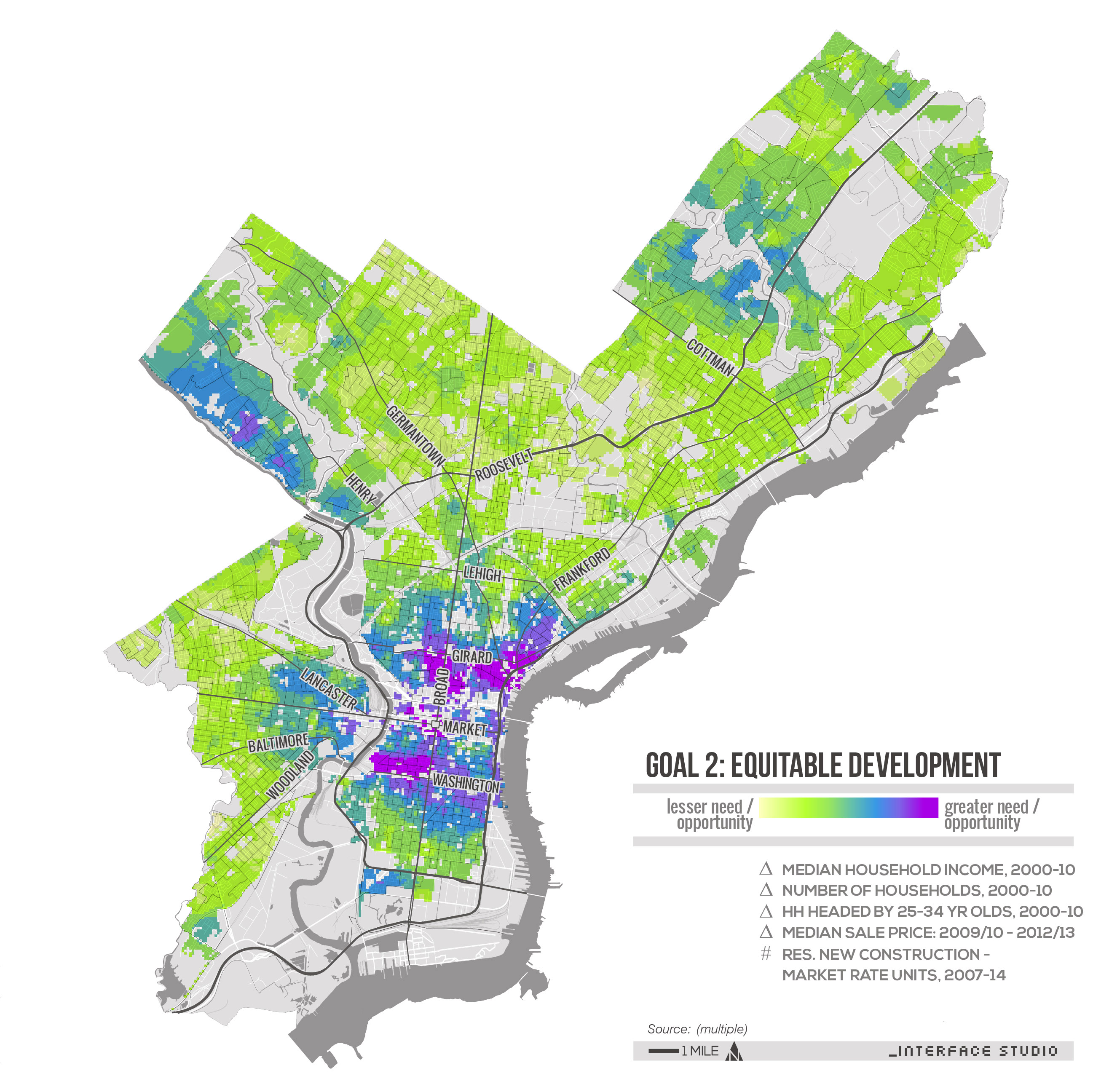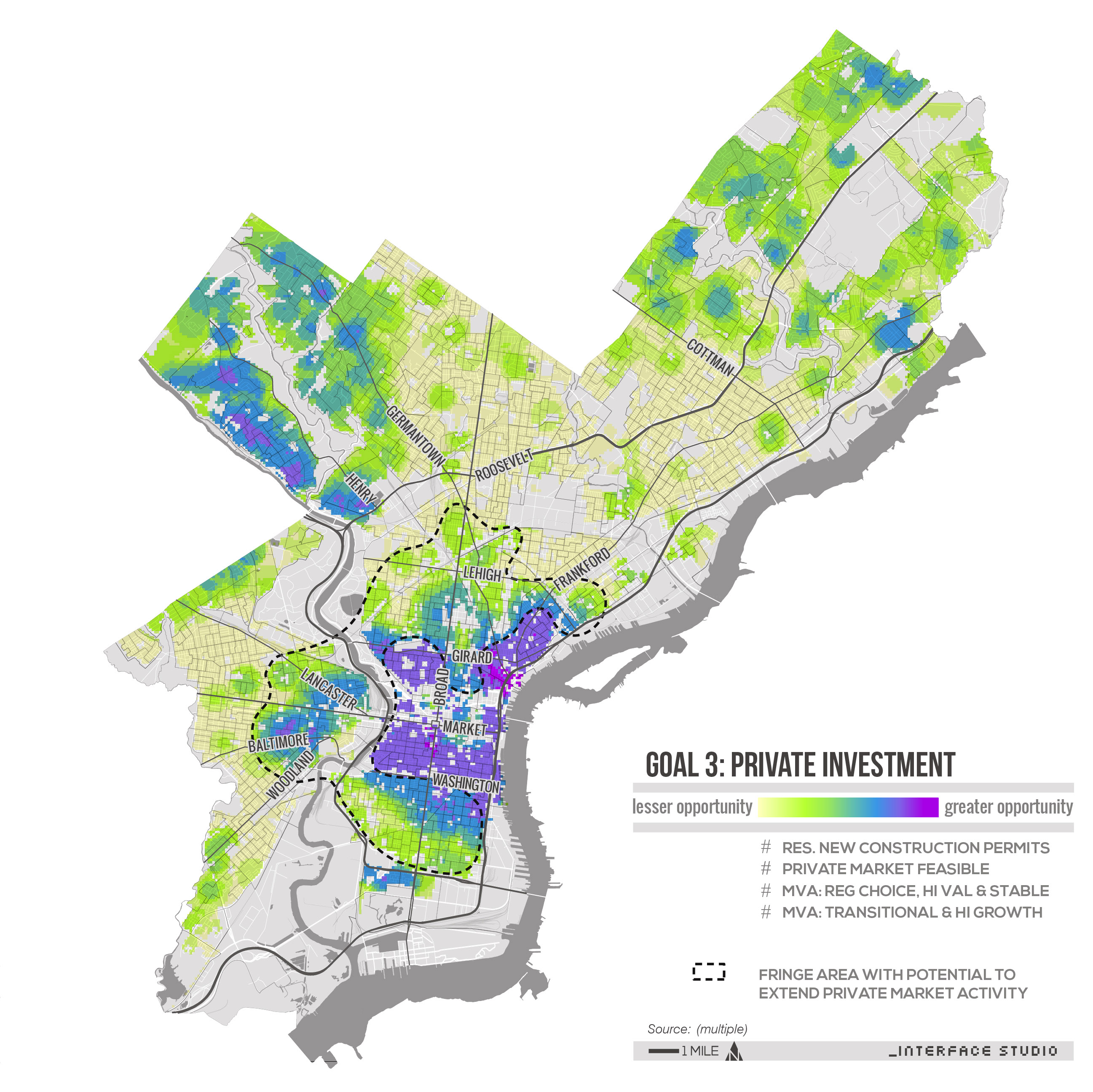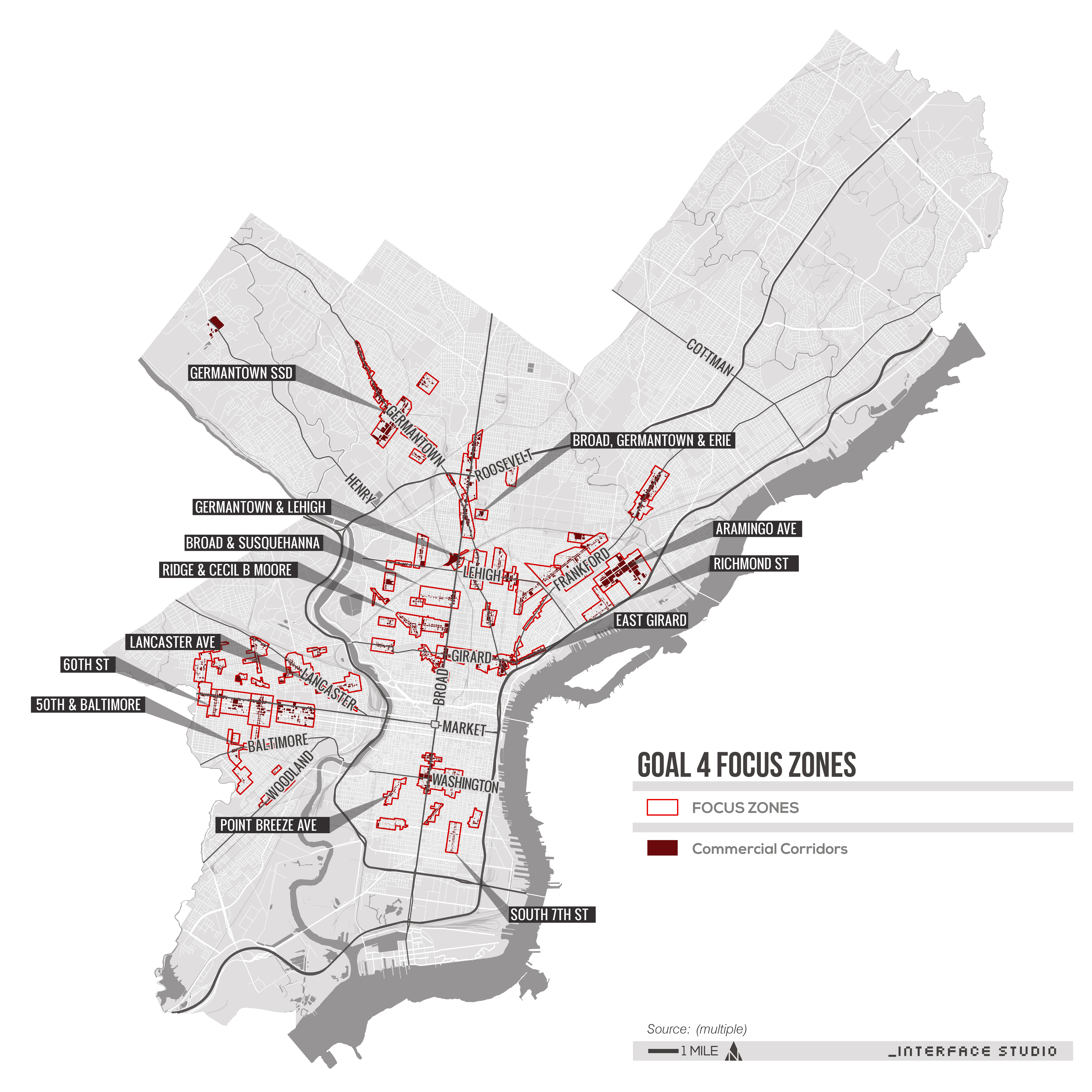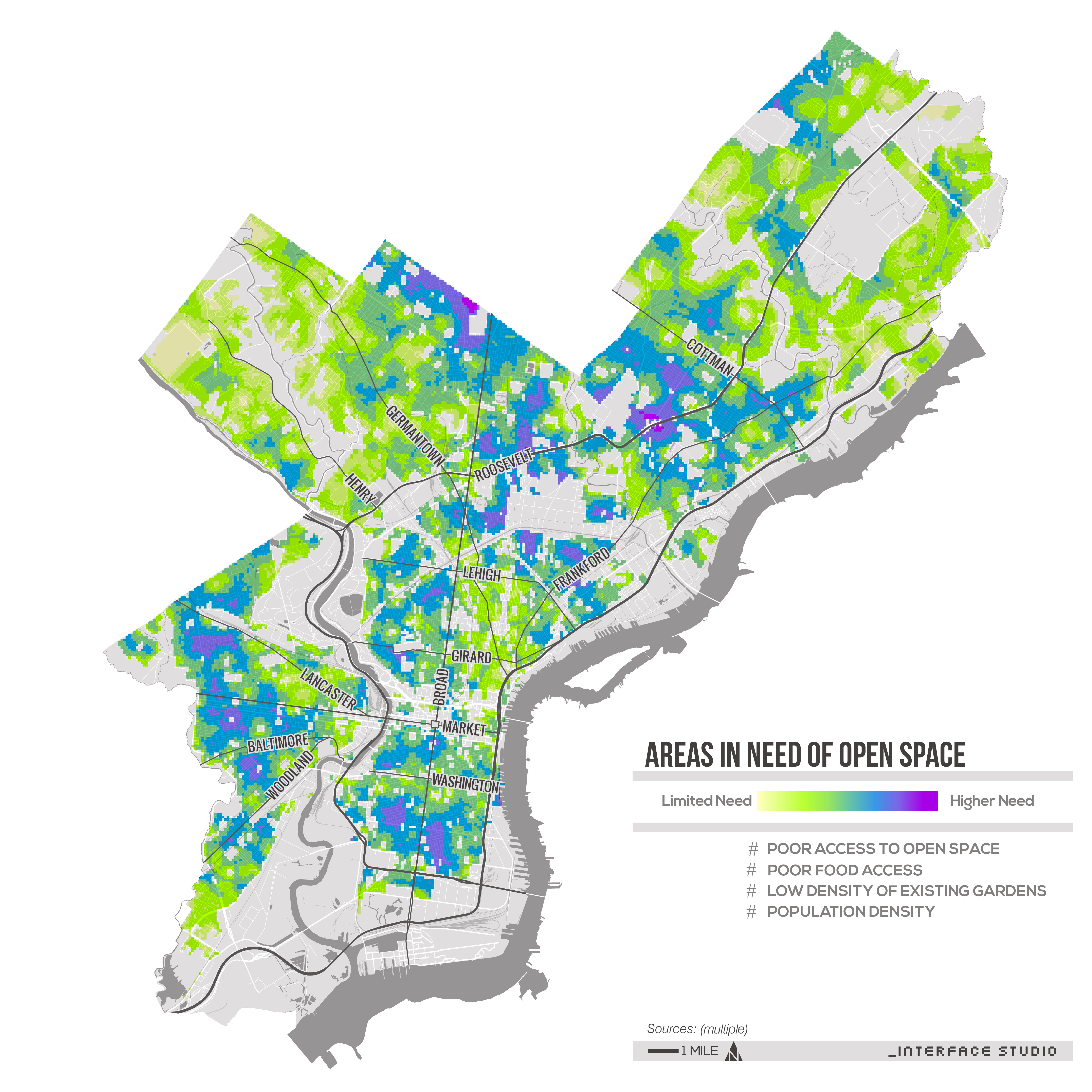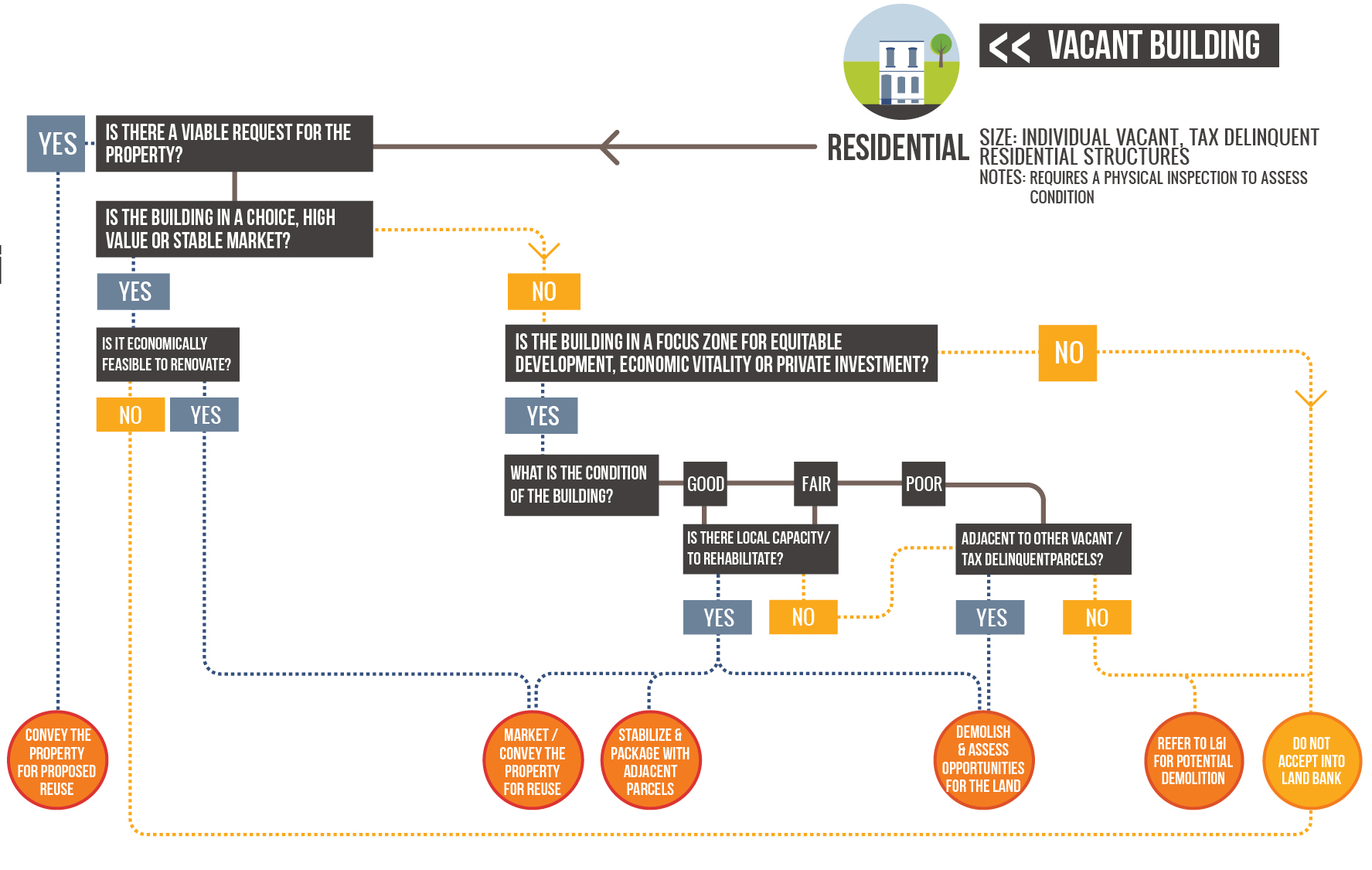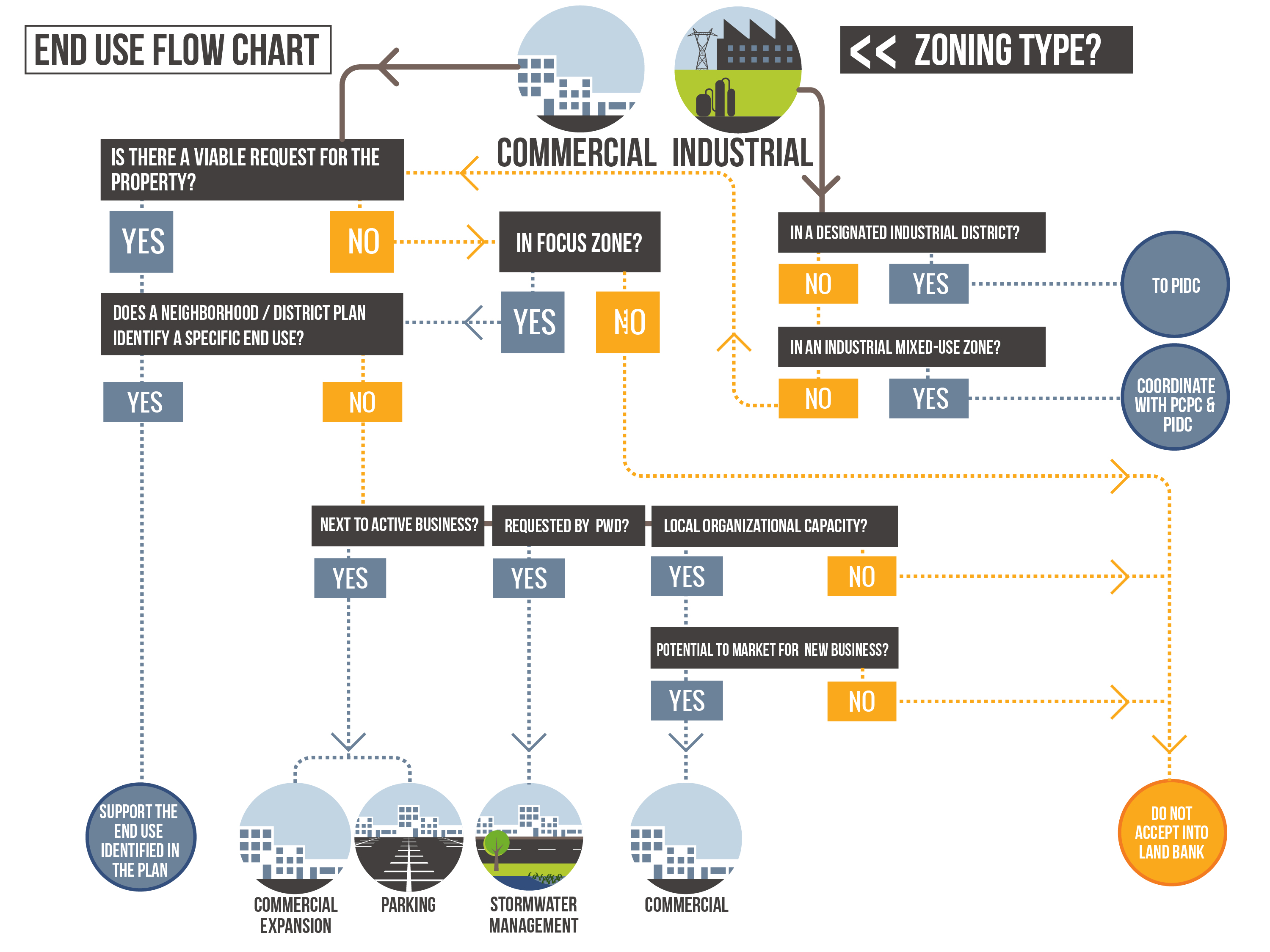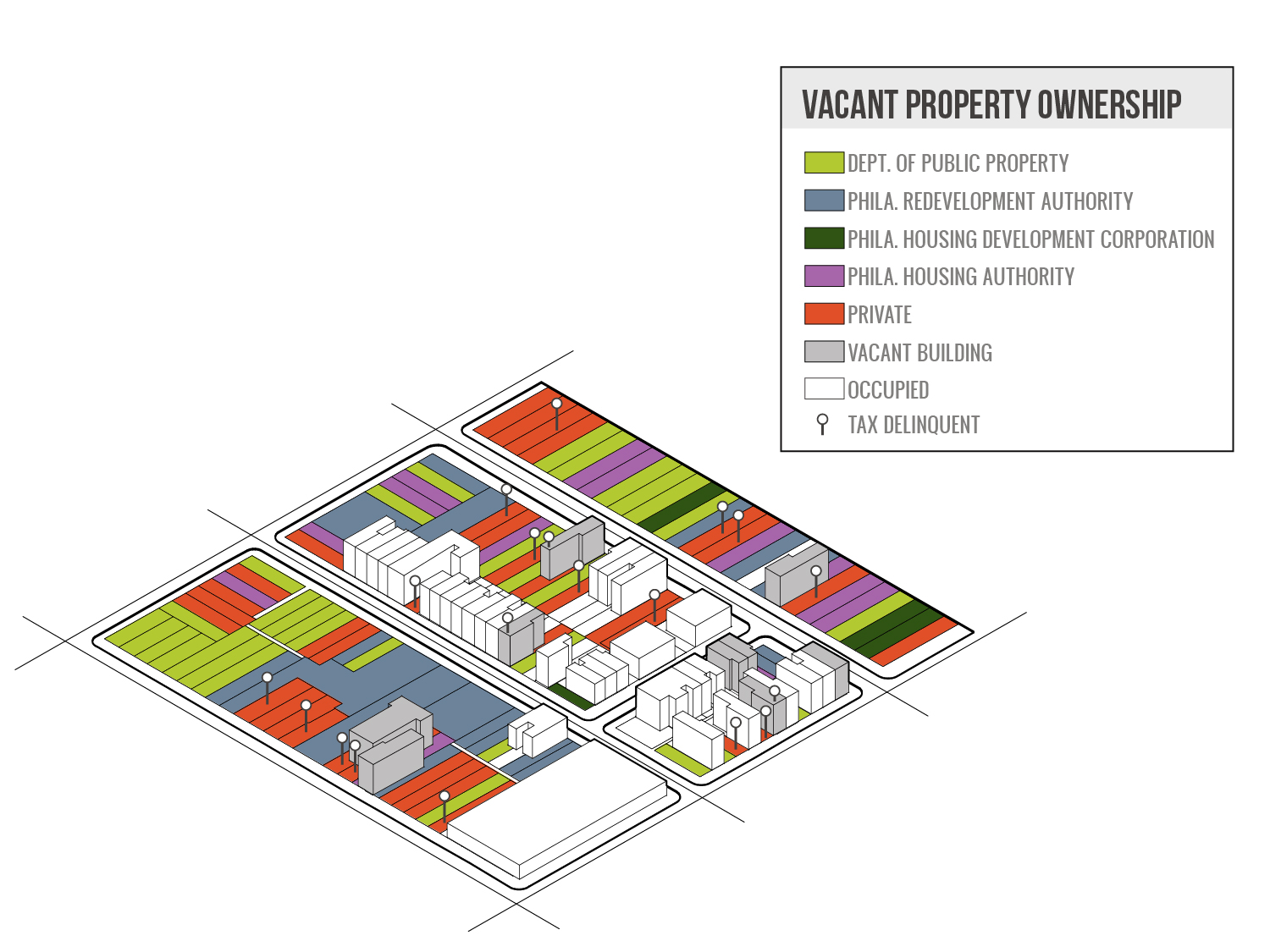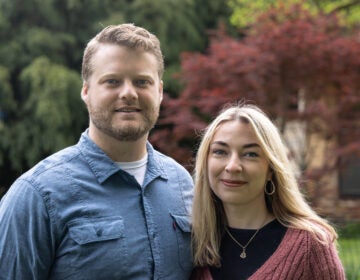Philadelphia Land Bank releases plan to tackle vacancy
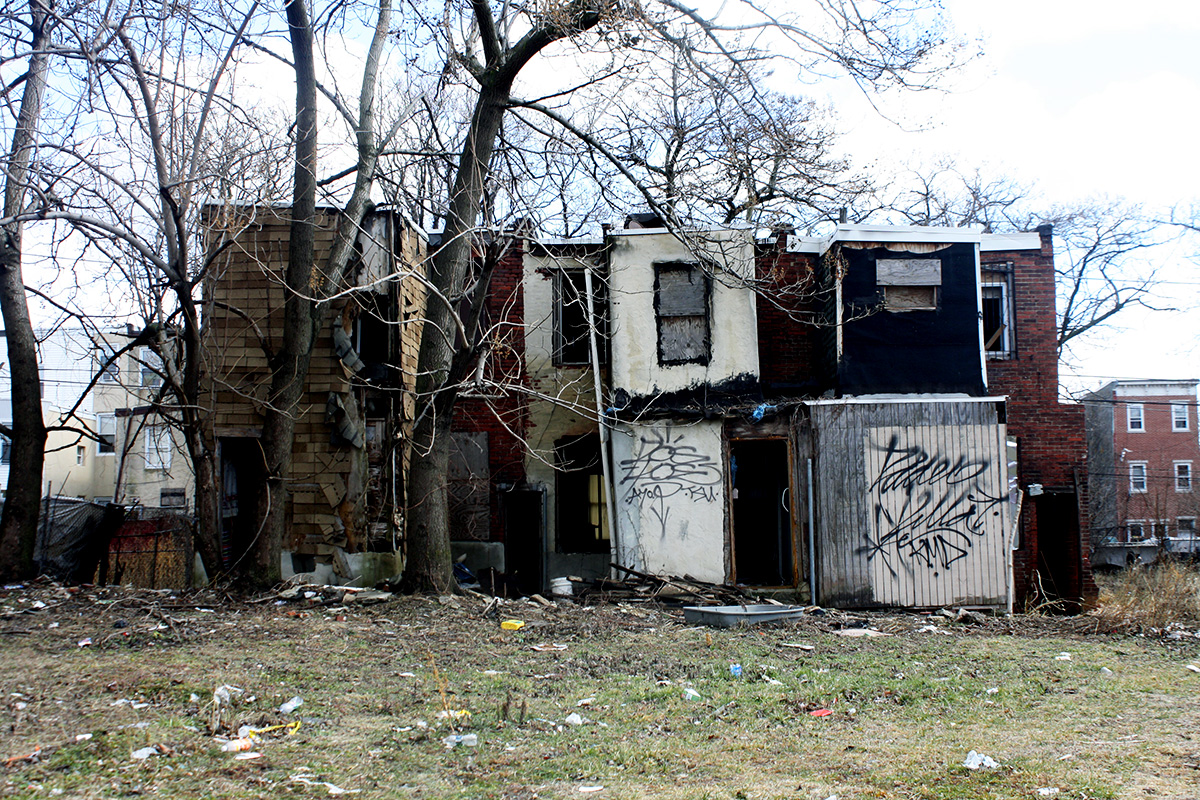
The Philadelphia Land Bank, a nascent agency organized to streamline the redevelopment of thousands of Philadelphia’s vacant and tax-delinquent properties, released a draft of a strategic plan on Wednesday recommending a number of goals the new body should pursue over the next five years.
The plan, which was written by a team led by Philadelphia-based Interface Studios, is the result of four months of analysis of data provided by various city agencies and meetings with dozens of advocacy groups and city officials who wrestled the Land Bank into existence.
The Land Bank board will solicit community feedback at a public hearing in mid-October and complete a final draft of the plan by the end of the month. The plan will then be sent to City Council for its approval.
Those who’ve followed the development of the Land Bank closely over the past few years won’t find any major surprises in the draft plan. Its overarching goal is simple: “to return vacant and tax delinquent property to productive reuse.” Deceptively simple, perhaps, given that the Land Bank itself wouldn’t have been created if those few words didn’t represent an intricate, elusive goal for Philadelphia and other cities around the country.
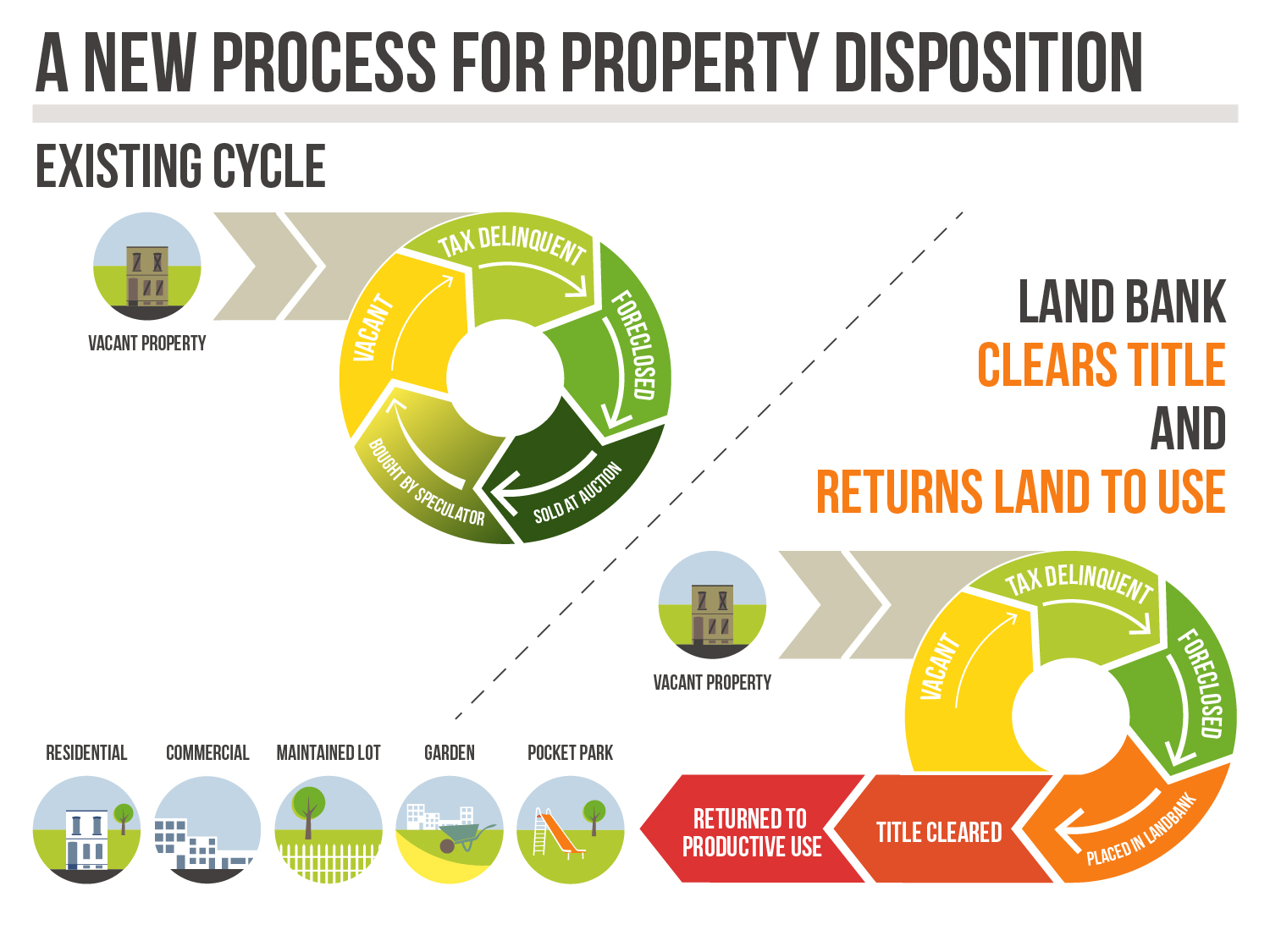
The Land Bank is intended to address the vacancy problem by consolidating ownership of city-owned properties, acquiring privately owned tax-delinquent properties, clearing tax liens and tangled titles, and selling or otherwise transferring properties in its inventory for development or other community uses. According to the plan, it will seek to promote new affordable and market-rate housing development, the creation of new businesses and the expansion of existing ones, the vitality of urban agriculture, and the availability of open space and green infrastructure.
As part of the strategic planning process, Interface Studio—along with partners Real Estate Strategies, Inc. and Lamar Wilson Associates—provided an updated inventory of vacant and tax-delinquent parcels in Philadelphia.
-
Roughly 8,000 vacant parcels are currently under some form of public ownership in Philadelphia and not committed to a specific project.
-
Another 24,000 properties are vacant and tax-delinquent but privately owned, according to the plan.
-
Of those 32,000 potential Land Bank properties, around 9,000 are vacant buildings.
-
The team identified more than 100 “assemblage opportunities,” each involving more than 10 vacant properties.
-
2,100 vacant lots sit next to homes whose owners are up-to-date on their taxes.
The data used to populate the report came from the city’s own public inventory of vacant land, property surveys conducted by the City Planning Commission and by Interface Studio, the Water Department and the Office of Innovation and Technology and—in the case of privately owned, tax-delinquent and vacant properties—the Revenue Department.
In an interview with PlanPhilly on Monday, John Carpenter, a deputy director for the Philadelphia Redevelopment Authority, said that the various city agencies that hold property were helpful and forthcoming with the information. But Scott Page, the founder and principal of Interface Studio, acknowledged that the data still isn’t complete.
“We say in the report a number of times that the data is imperfect, and everyone is aware that that data is imperfect,” said Page. “One thing we learned in the process is that regardless of what dataset we looked at—whether it was Water Department or L&I or a combination of both or even the Planning Commission district data—it didn’t change the geography of where there’s a concentration of vacancy, it just changed the intensity … In terms of where there are real opportunities for the Land Bank to play a role, the geographies aren’t really changing.”
The plan outlines seven goals for the Land Bank. The first, a citywide goal, is to return individual vacant properties to productive use by identifying and marketing individual development opportunities (IDOs), transferring one-off vacant properties to adjacent owners as side yards, and preserving existing community gardens.
The next set of goals are focused on specific areas with high levels of vacant properties where the Land Bank will “proactively acquire, assemble, and dispose of property for specific purposes based on determined need and opportunity.” The goals are:
-
Promoting equitable development by supporting existing initiatives, such as Council President Darrell Clarke’s plan to build 1,500 new affordable housing units, and working to preserve affordability in neighborhoods undergoing gentrification. The plan recommends targeting new affordable housing in areas with good access to food and transit, and with a high concentration of “cost-burdened renters.”
-
Fostering private development by offering land for market-rate projects that include affordable housing components.
-
Supporting economic development by acquiring and repurposing properties on neighborhood commercial corridors and adjacent to existing businesses.
-
Protecting and increasing open space in areas that lack it.
The following images show the focus zones where those goals will be pursued.
The final goals outlined in the plan emphasize the transparent and efficient operation of the Land Bank. Its planning should coincide with the plans already underway as part of the Planning Commission’s Philadelphia2035 process, it recommends. Data should continue to form the foundation of Land Bank operations, and the public and stakeholder groups should have frequent opportunities to participate in its development. Additionally, properties within the Land Bank should be actively marketed to keep property moving into productive hands.
The immediate priorities of the Land Bank, according to the plan, should be to pursue the low-lying fruit, dispositions that establish the entity as an efficient, successful new tool for tackling vacancy in the city. That could include early actions like acquiring and transferring individual properties for side yards, infill developments, and existing community gardens. Additionally, the Land Bank should selectively acquire private tax-delinquent properties to enhance the marketability of vacant properties that are already in the public inventory.
Jennifer Kates, an aide to Councilwoman María Quiñones-Sánchez, who sponsored the Land Bank legislation, and a member of the Land Bank board, said that the data analysis underpinning the strategic plan is a significant accomplishment that will guide a more productive approach to undoing vacancy and tax delinquency. Kates also said that she’s excited about the inclusion of “decision trees,” pictured below, that will help shape the Land Bank’s approach to finding new uses for vacant properties.
“These [decision trees] represent a major step forward in approaching property acquisition and disposition strategically,” Kates wrote in an email. “One of the greatest frustrations with the old system is that there is so little guidance about what uses are viable for a particular location. For example, is infill housing development possible now, or in the near term? Does parking make sense at this location? Is this a potential assembly site? Finally we are in a position to have that kind of guidance.”
When it is submitted to Council, the plan will also include specific targets for acquisition and disposition of properties, for specific uses, in each of the next five years. Those targets will be broken down into seven end uses: side yards and parking spaces, individual development opportunities, existing community gardens, affordable housing, market-rate housing, economic development, and open space. In the current draft, the plan sets a target of having all 8,000 identified publicly owned vacant properties in the Land Bank by the end of 2016. By the end of the 5-year period, it recommends the disposition of 2,750 of those properties. No targets have been set yet for acquisition of privately owned tax-delinquent properties.
Councilwoman Sánchez did not respond to a request for comment on this story. Council President Darrell Clarke’s office said it would withhold comments until a public hearing is held.
WHYY is your source for fact-based, in-depth journalism and information. As a nonprofit organization, we rely on financial support from readers like you. Please give today.



